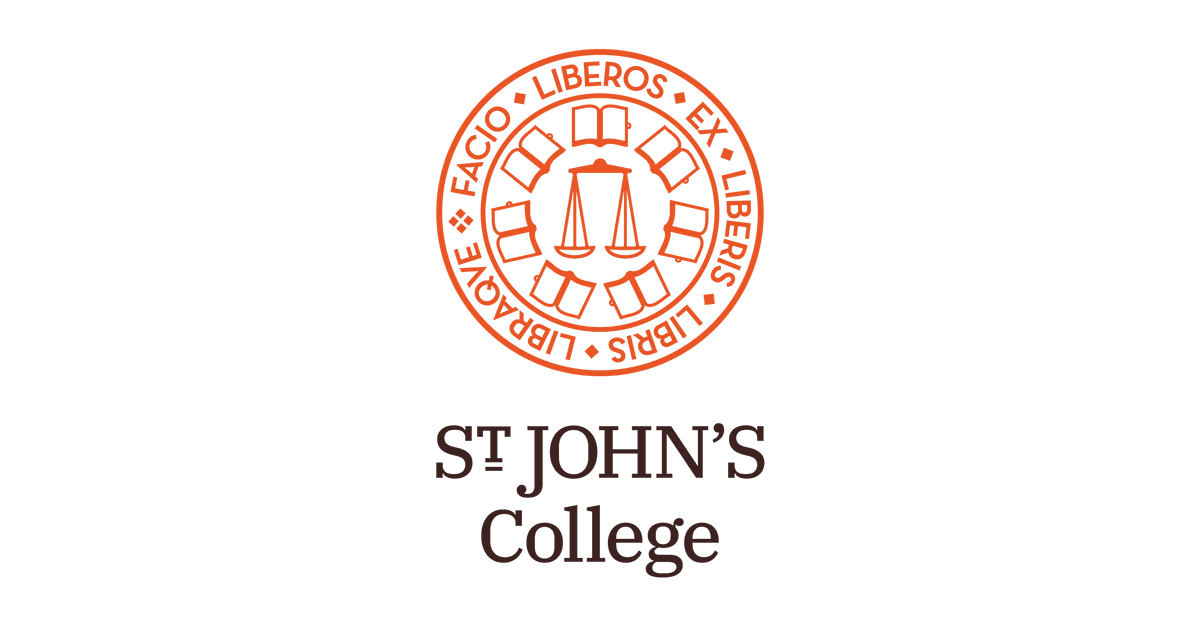Building Community, Book by Book
May 5, 2023 | By Luis Sanchez (AGI23)

Catherine Dixon came to St. John’s College in 2009, excited but nervous to fill the position of director of the Greenfield Library in Annapolis. She was somewhat familiar with the college and its unique Great Books program, but because she was not a Johnnie alum herself, she says, “I didn’t know what to expect.”
The purpose of the Greenfield Library is to support the Program. “Which is no easy task,” Dixon adds.
The St. John’s Program comprises a long list of great books of the Western tradition. In stark contrast with many colleges—where students seldom read, say, Spinoza or Leibniz, and instead read papers or textbooks discussing these authors—the books on St. John’s reading list are rarely less than 100 years old. More often than not, they date back several thousand years.
St. John’s students must read the Bible, Euclid’s Elements, Plato’s Republic, Aristotle’s Politics, St. Thomas Aquinas’s Summa Theologica, Shakespeare’s Sonnets, Descartes’s Discourse on Method, and the United States Constitution, among many other titles. (It’s no wonder The New York Times once called St. John’s “the most contrarian college in America.”) First-year students are introduced to the library by Dixon herself and the library staff, who encourage them to take advantage of all resources available.
Greenfield Library houses a rich variety of translations and editions, including some translations of Program books by the college’s faculty members, or “tutors.” Having good translations available to students is of the utmost importance, and the library staff works hard to ensure students have access to the best selection possible. “There is a library committee of tutors who advise the library on acquisitions and may other library activities,” says Annapolis tutor and incoming dean Suzy Paalman.
But there is more to the Greenfield Library than just the Program. “We try to be aware of study groups and stay up to date with the interests of the community,” says Dixon. For instance, not long after coming to St. John’s, Dixon discovered that many patrons were interested in cookbooks, so the library acquired a robust collection for them to enjoy. And then there is the collection of Nobel Prize-winning works of literature, as well as other recent publications across various disciplines. These are not there just for show, as “the items in this collection see a steady circulation,” says Dixon.
Greenfield Library has a rare books collection as well, with gems such as a beautifully crafted 1486 edition of St. Augustine’s The City of God and a first edition of Thomas Hobbes’s Leviathan, as well as multiple editions of Euclid’s Elements. (The oldest book in the collection is a 1480 edition of Saint Antoninus’s Summa Tertia Pars.) It contains medical texts, too, like an edition of Roman polymath Aulus Cornelius Celsus’s De Re Medica and works by Jérôme Fracastor, the 16th century Italian epidemiologist who is often referred to as “the father of modern epidemiology.”
“We also encourage people of the community to come and share the personal collections they are building by submitting an entry in the annual collecting contest,” Dixon says. Students are invited to submit short essays describing their own private book collections and the stories behind them. A judging committee reviews them and awards prizes for the two “best” (i.e., most creative) ones, as well as an honorary third-place award. These selections are then displayed in the Greenfield Library for the community to see, appreciate, and enjoy.
One private collection currently on view illustrates student Jonathon McKenney’s (AGI24) journey through Russia in books and includes a 1963 edition of Alexander Solzhenitsyn’s One Day in the Life of Ivan Denisovich. On McKenney’s application essay—displayed along with his treasured texts—the student remembers how, due to his mother’s work, his family moved every few years from one country to another while he was growing up. He attributes his fascination with Russia to the fact that it was the first place he lived in before his “memories begin to crystalize at around 3 to 3 ½.” Showcasing personal tomes like these might spark fresh curiosities—or even just interesting conversations—among the Greenfield Library’s many visitors.

